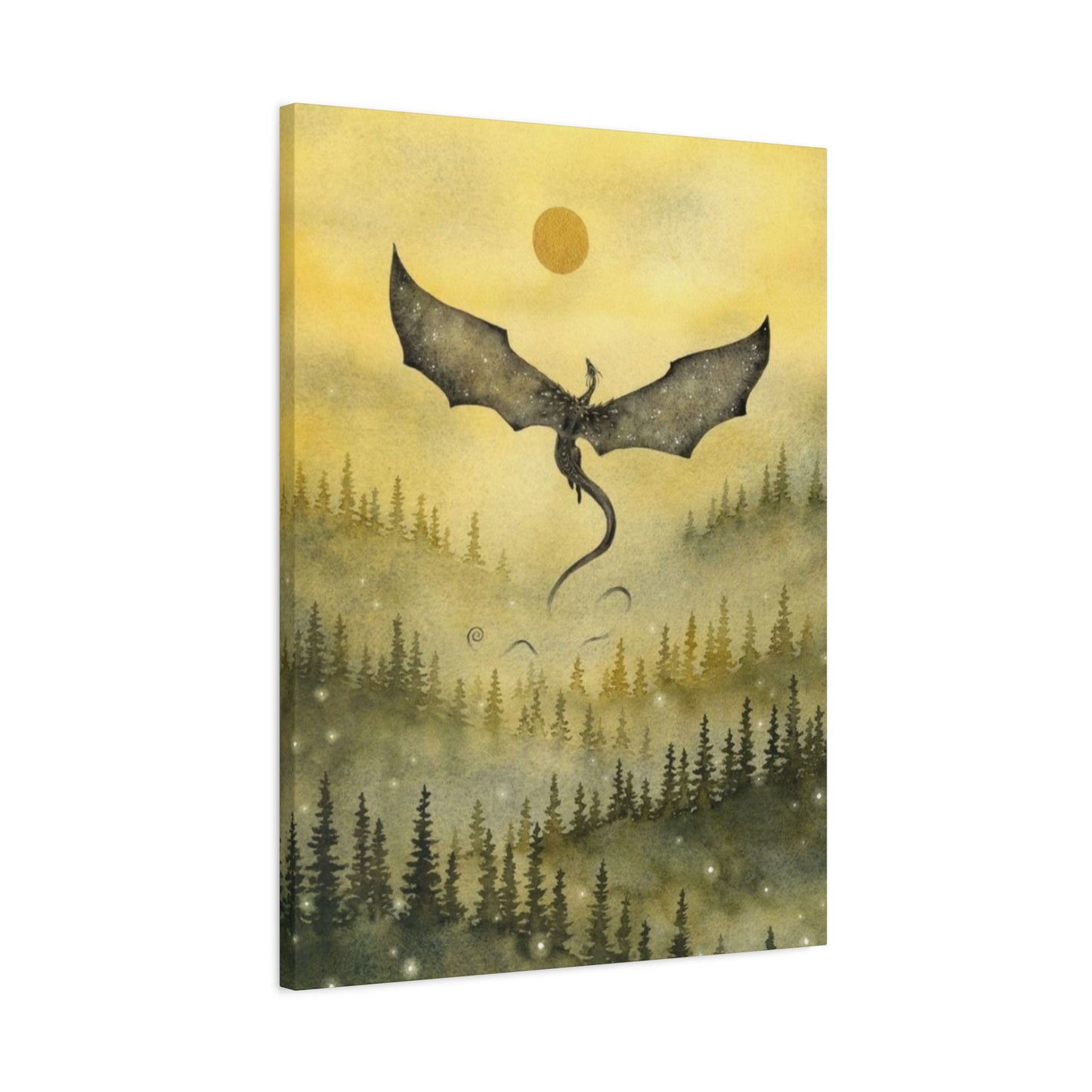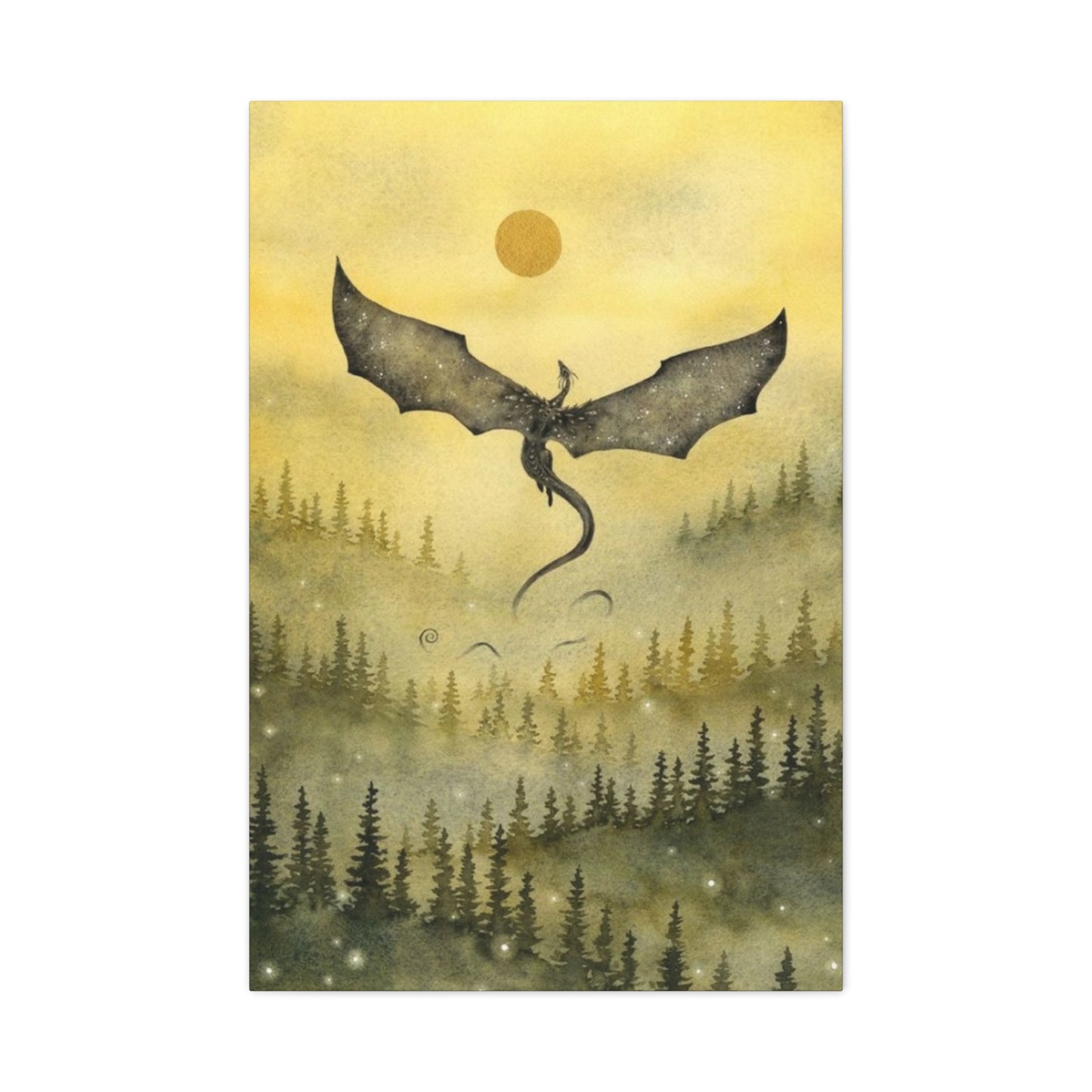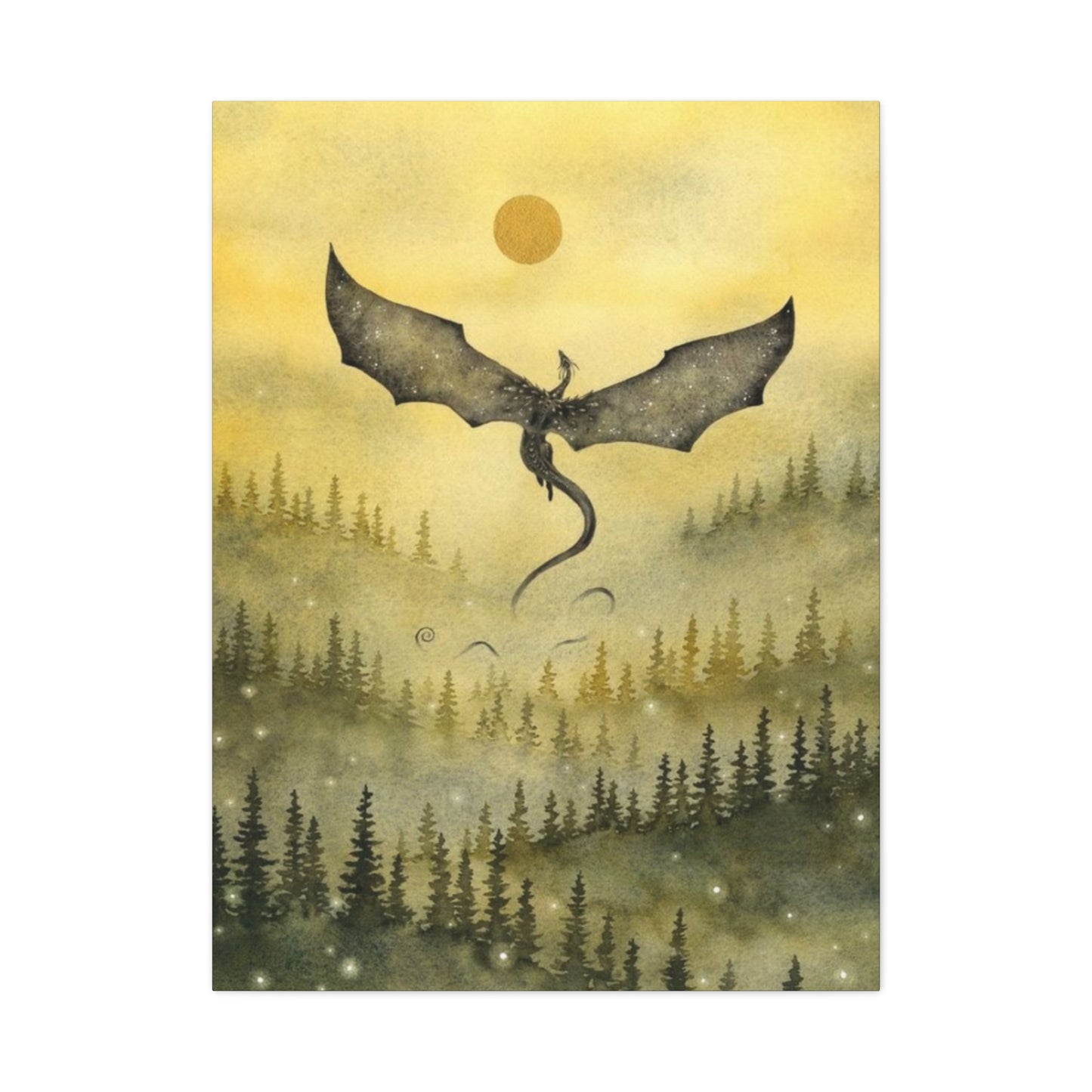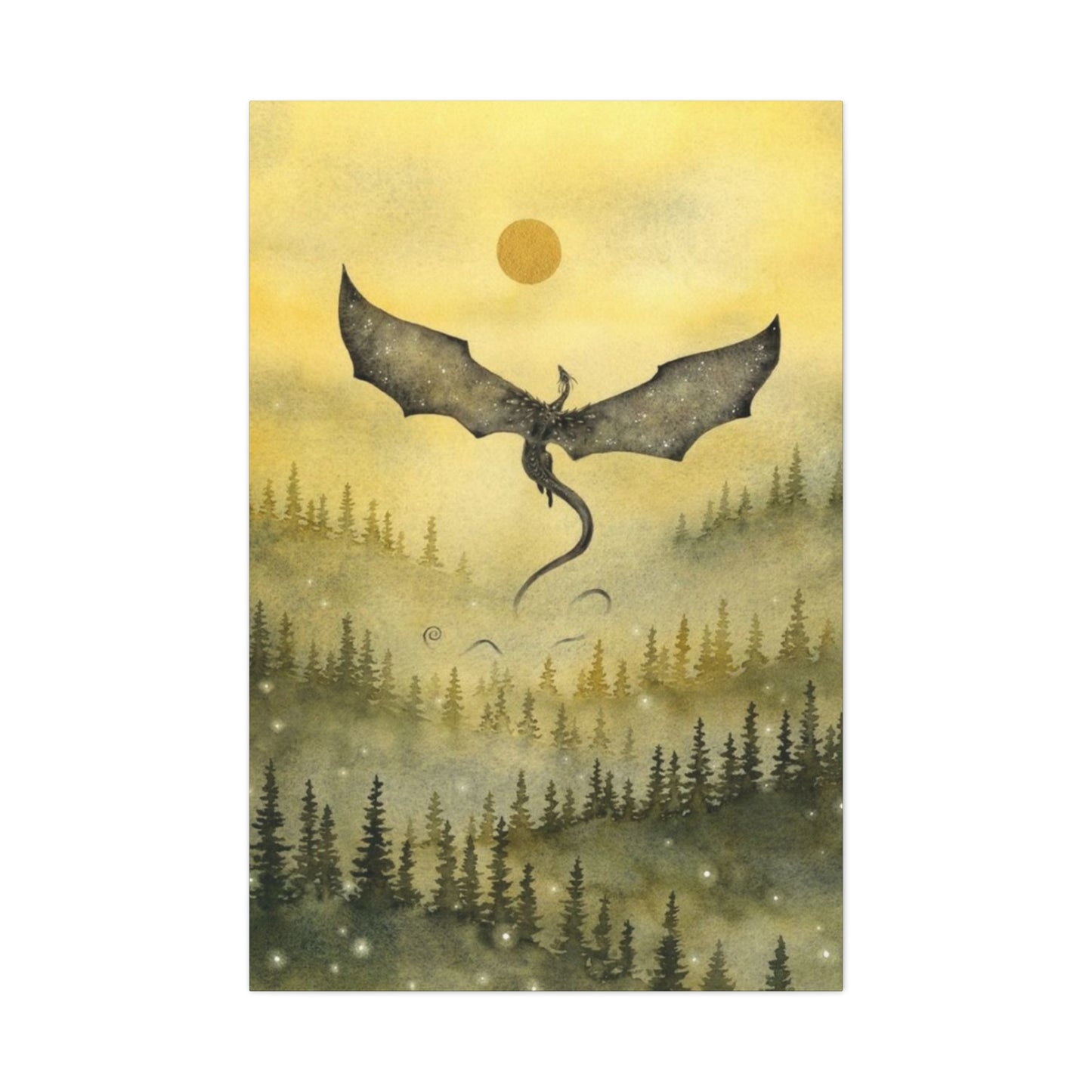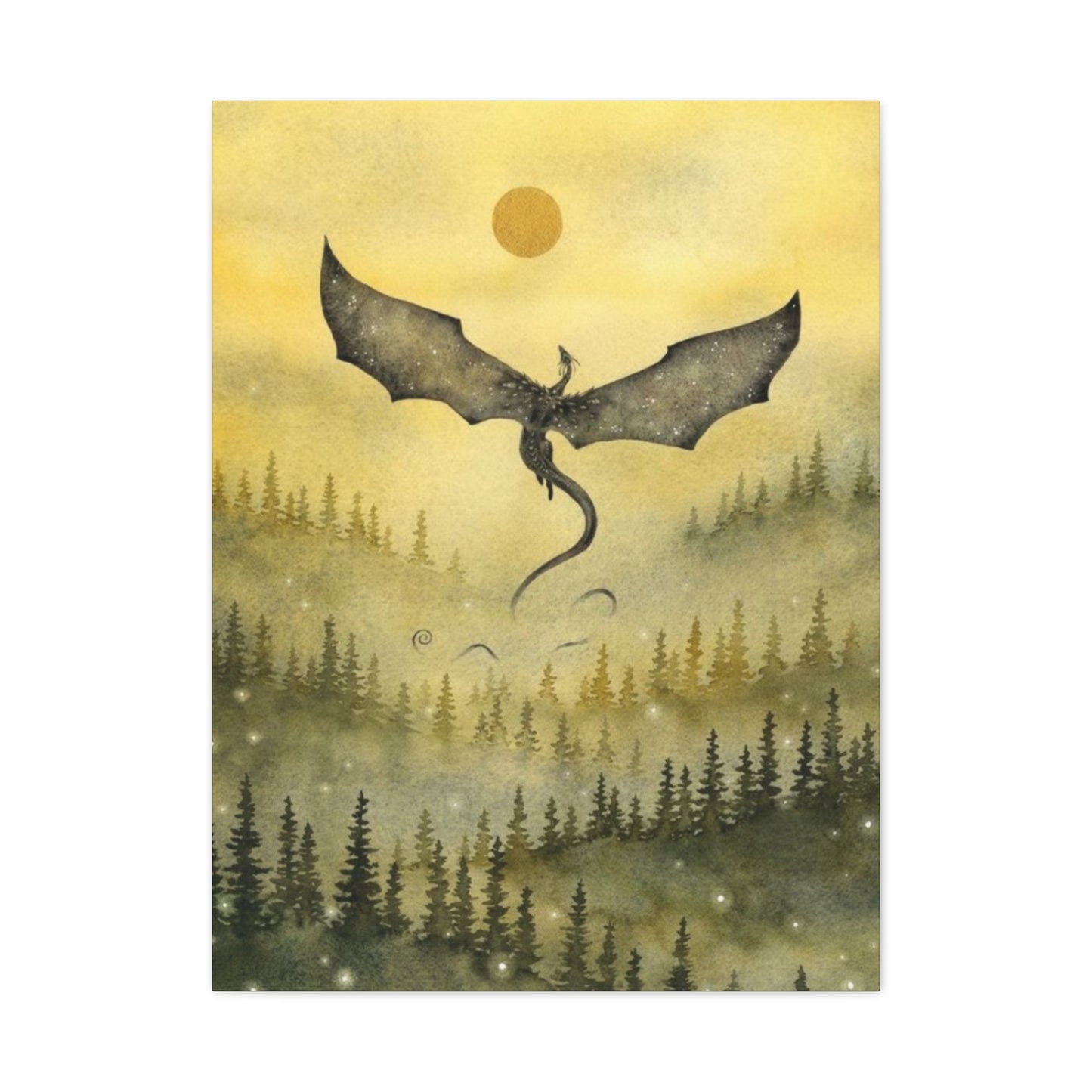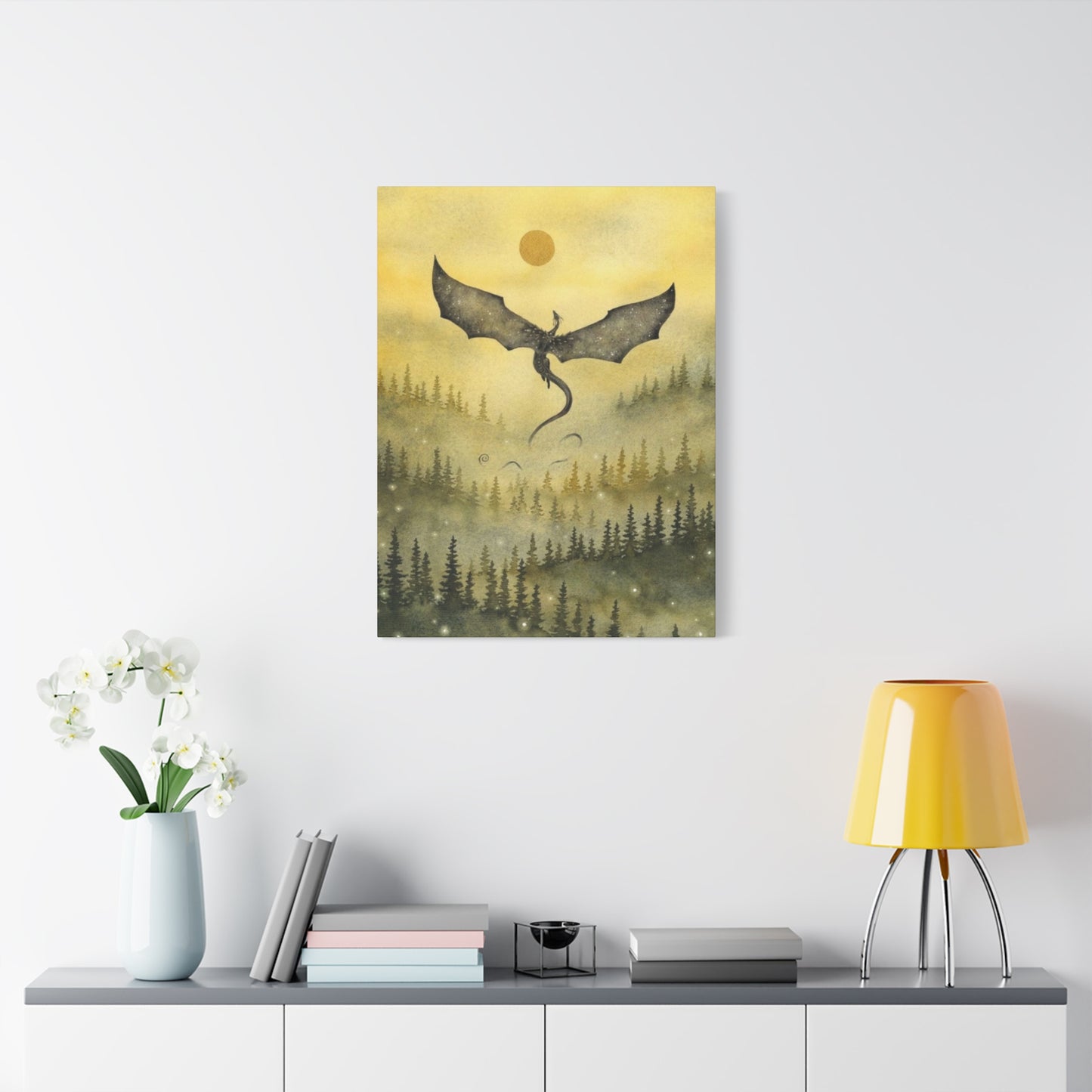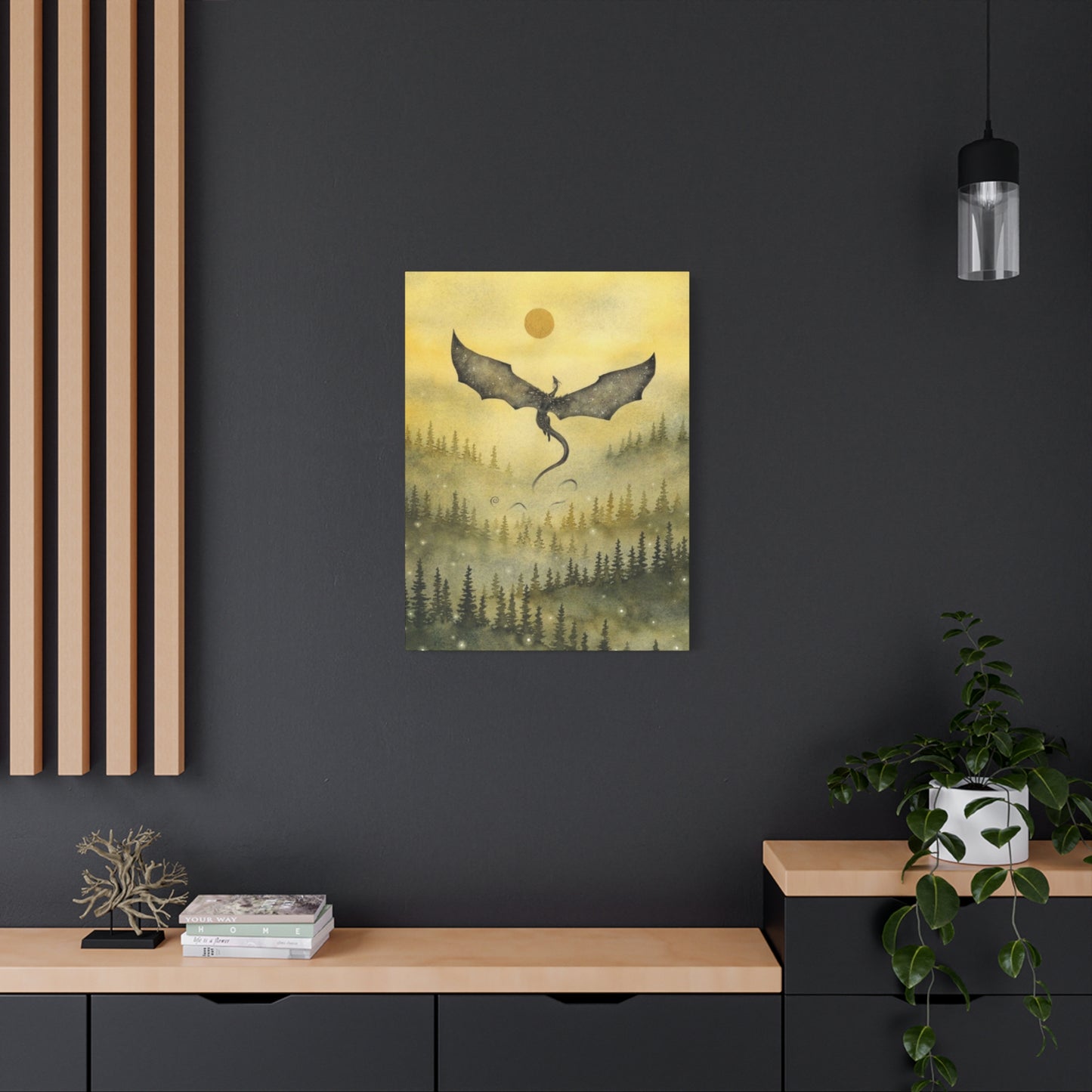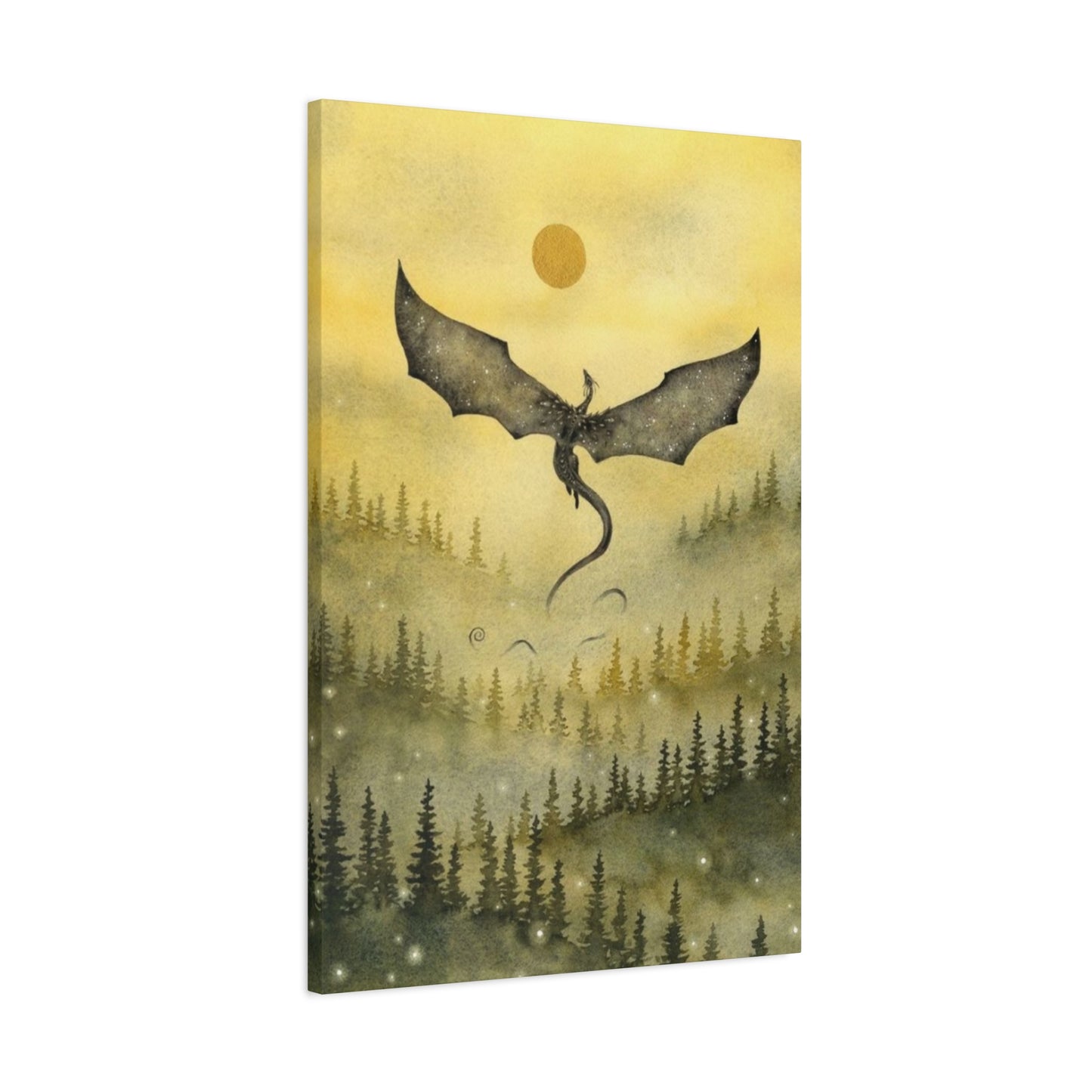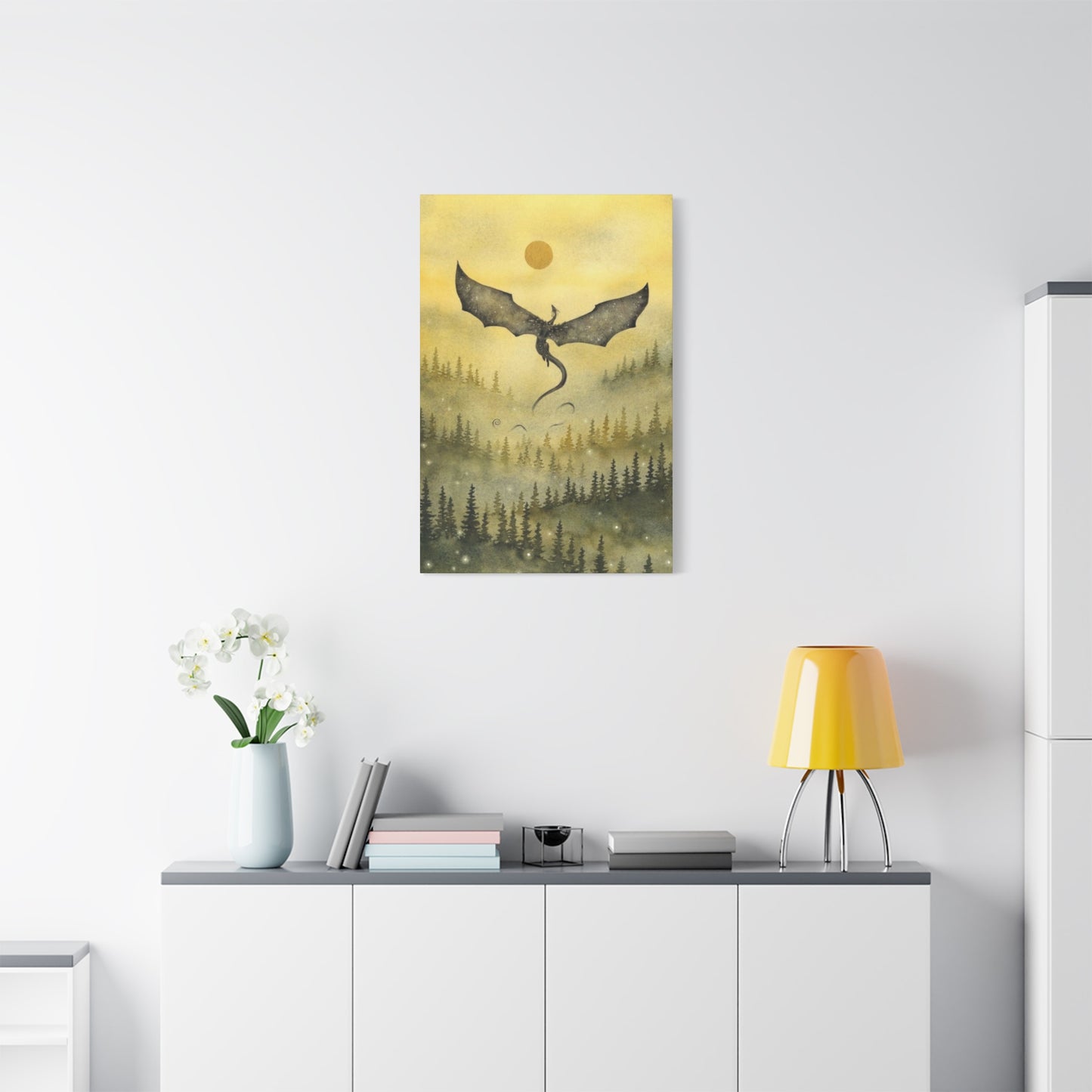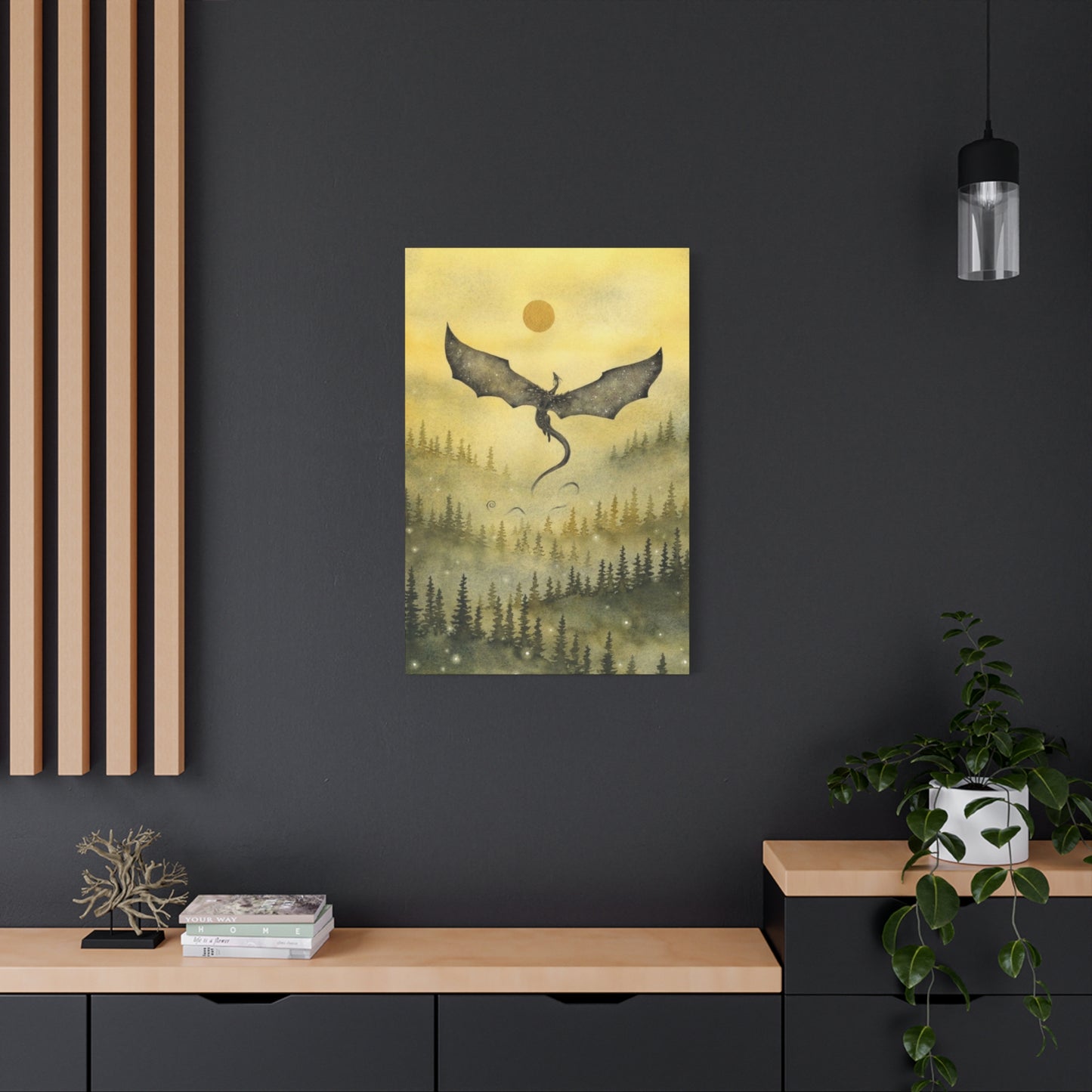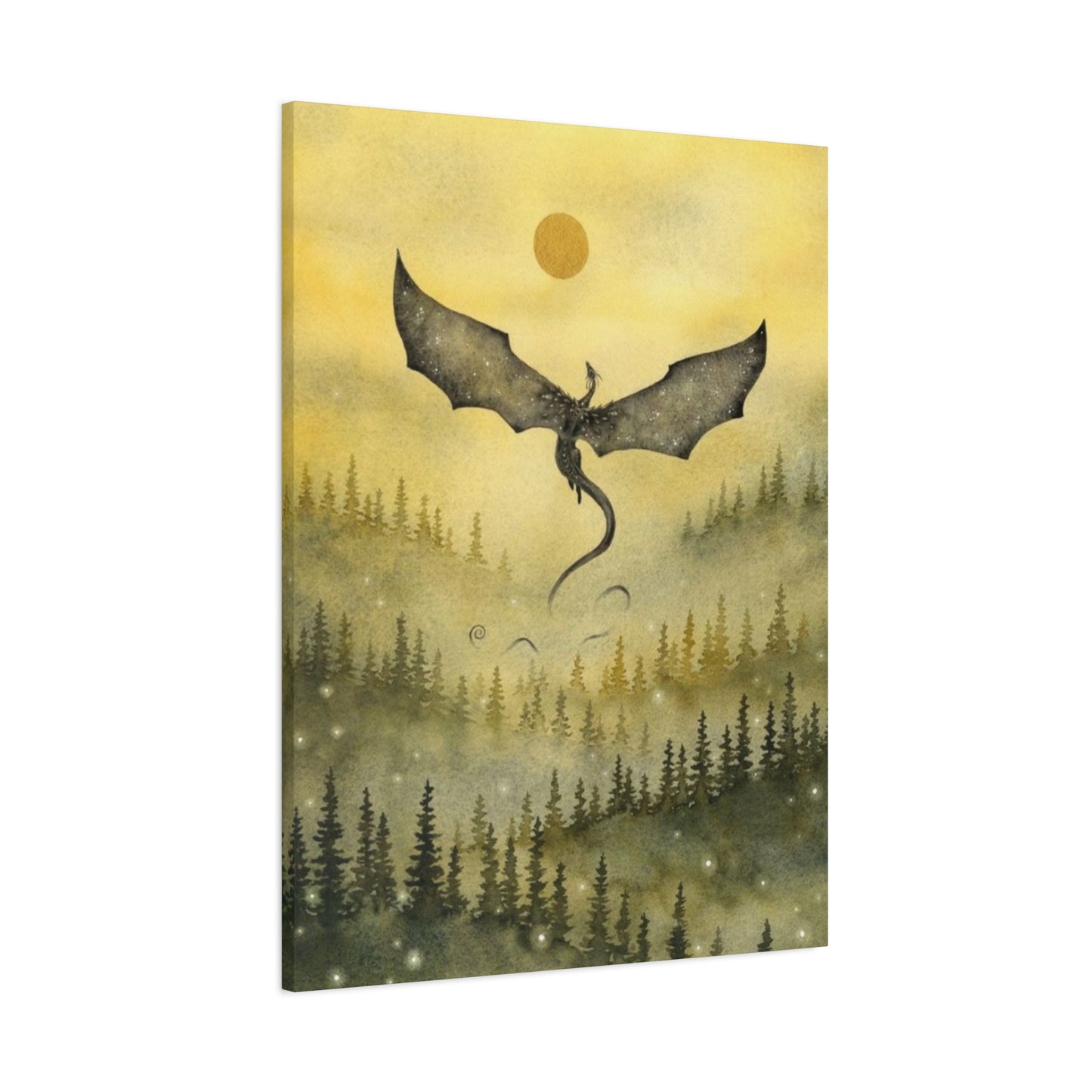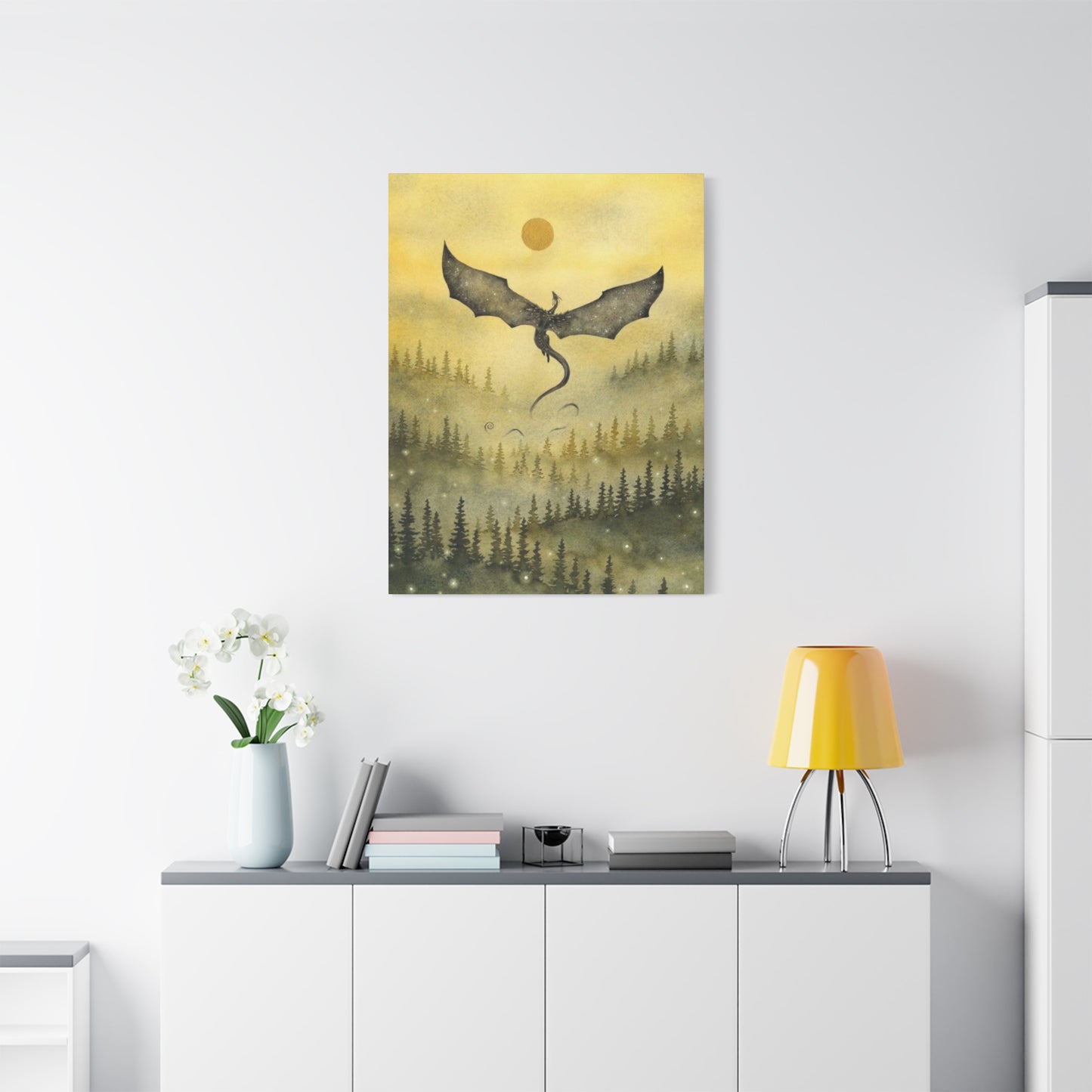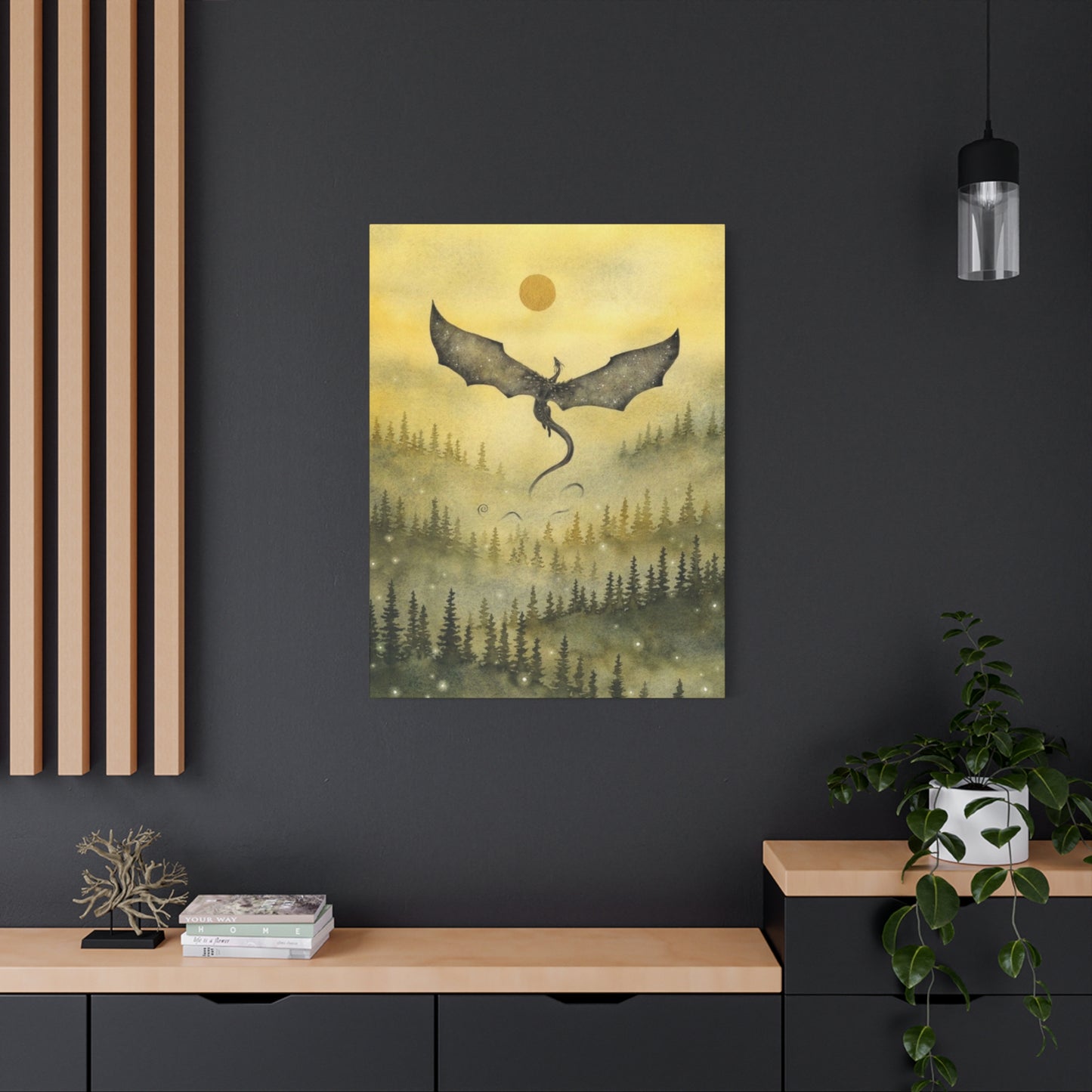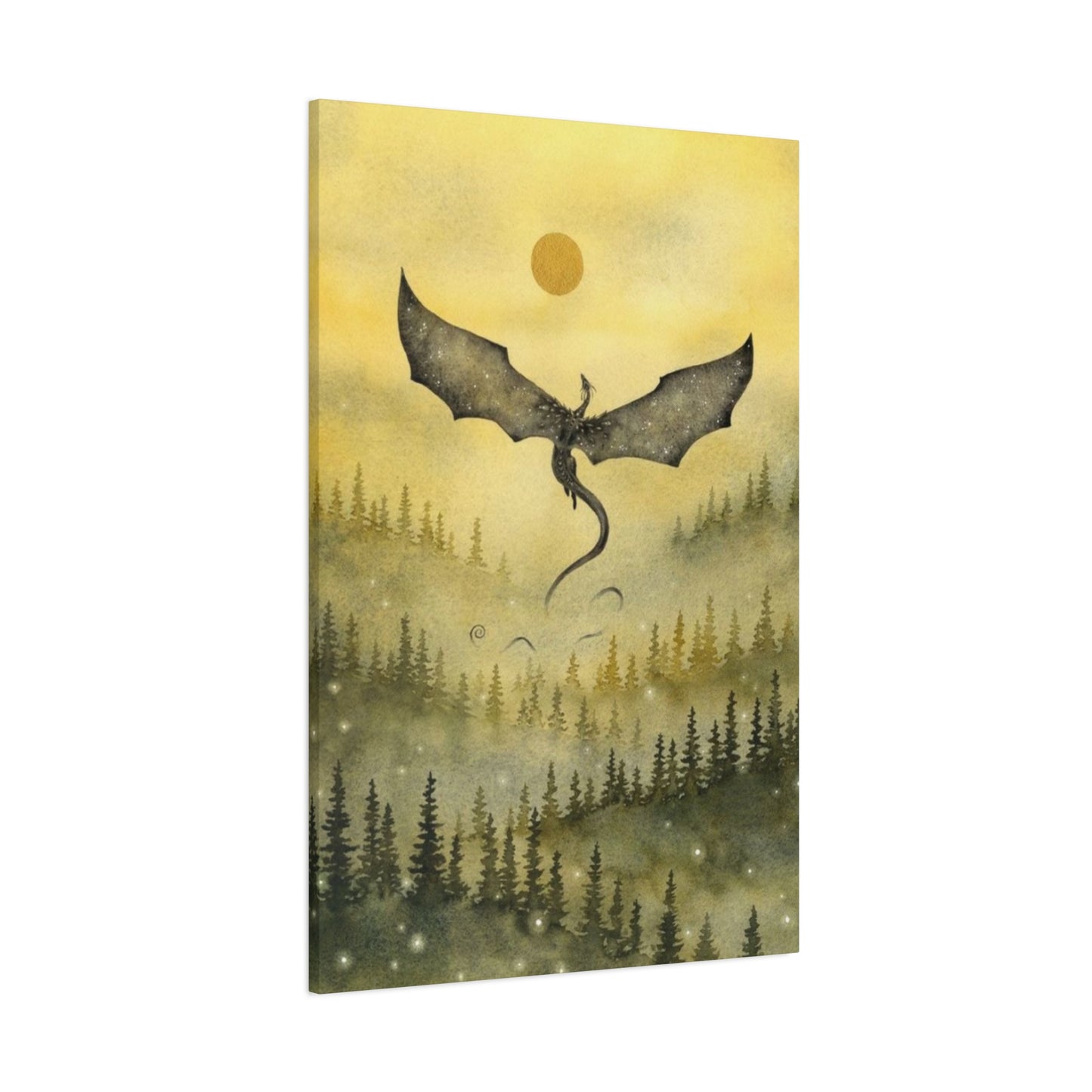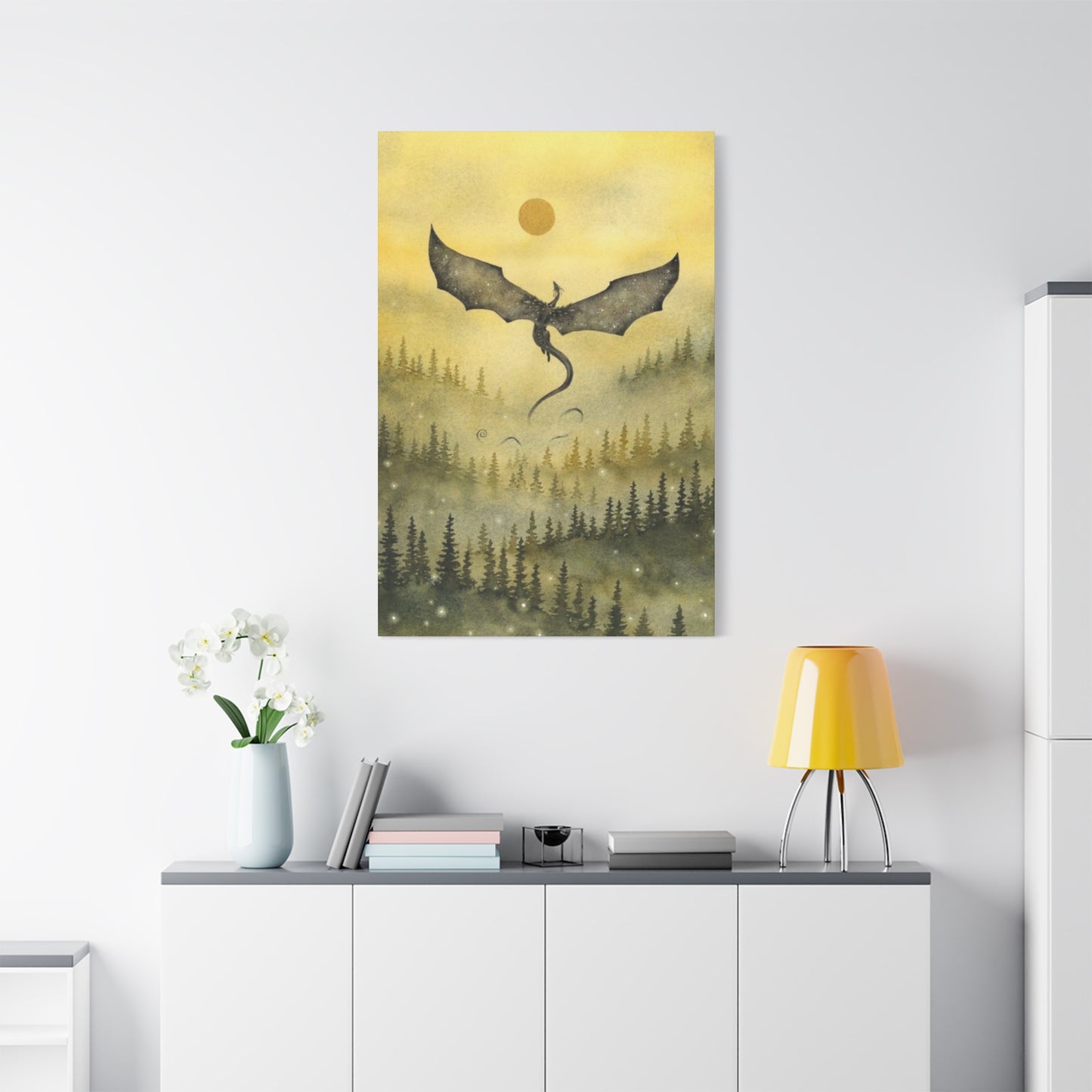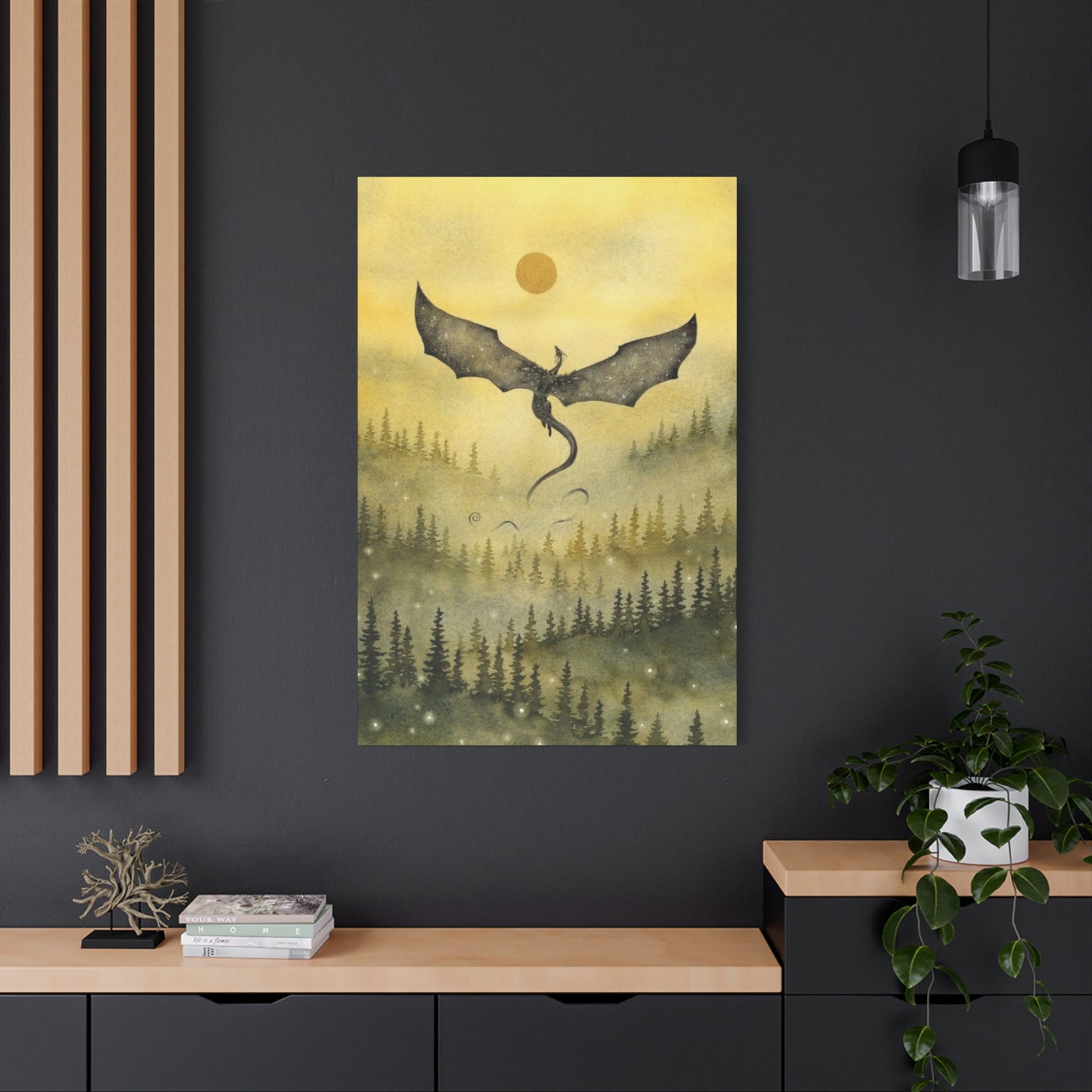Enchanted Dragon Forest Wall Art: Your Gateway to Mythical Home Transformation
The allure of mythical creatures dwelling within ancient woodlands has captivated human imagination for centuries. Dragon forest wall art represents a unique fusion of fantasy and nature, bringing the mysterious power of these legendary beasts into our living environments. This artistic genre combines the primal beauty of untamed forests with the awe-inspiring presence of dragons, creating visual narratives that transform ordinary rooms into portals of wonder and enchantment.
When we explore the realm of dragon forest artwork, we enter a world where creativity knows no boundaries. These pieces serve as more than mere decorations; they function as conversation starters, mood enhancers, and windows into realms beyond our everyday experience. The marriage of forest imagery with dragon mythology creates a compelling visual language that speaks to our deepest desires for adventure, mystery, and connection with the natural world.
The growing popularity of fantasy-themed home décor has elevated dragon forest wall art from niche collectibles to mainstream design elements. Homeowners, collectors, and fantasy enthusiasts alike are discovering how these powerful images can reshape their living environments, infusing them with energy, mystique, and personal meaning. Whether rendered in traditional oil paintings, modern digital prints, or mixed-media compositions, dragon forest artwork offers endless possibilities for creative expression and home enhancement.
Understanding the appeal of dragon forest wall art requires recognizing the psychological impact of both elements. Forests represent growth, mystery, and natural cycles, while dragons embody power, wisdom, and transformation. Together, these elements create artwork that resonates on multiple levels, appealing to both our conscious aesthetic preferences and our subconscious archetypal associations.
Mystical Dragons in Forest Art
The portrayal of mystical dragons within forest settings represents one of the most evocative themes in contemporary fantasy art. These compositions typically feature ancient wyrms dwelling among towering trees, their scales reflecting dappled sunlight as they move through shadowy groves. The mystical aspect of these dragons often emphasizes their connection to natural magic, portraying them as guardians of ancient wisdom rather than fearsome destroyers.
Artists who specialize in mystical dragon forest scenes often incorporate elements that suggest otherworldly presence. Glowing eyes pierce through misty undergrowth, while ethereal light emanates from the creatures themselves, creating an atmosphere of supernatural wonder. These dragons are frequently depicted in poses that suggest contemplation or protection, watching over their forest domains with benevolent authority.
The color palettes employed in mystical dragon forest art tend toward earth tones enhanced with supernatural elements. Deep greens and browns provide the foundation, while touches of gold, silver, or ethereal blue indicate the magical nature of the dragons. This careful balance between natural and supernatural colors creates artwork that feels both grounded in reality and elevated beyond the ordinary.
Texture plays a crucial role in creating convincing mystical dragon forest scenes. Artists must render both the organic textures of bark, leaves, and moss alongside the unique surfaces of dragon scales, claws, and wings. The contrast between these textures adds visual interest while reinforcing the fantastical nature of the composition.
Many mystical dragon forest artworks incorporate symbolic elements that enhance their meaning. Ancient runes carved into tree bark, mystical symbols glowing in the air, or seasonal changes that mirror the dragon's emotional state all contribute to the deeper narrative of these pieces. These symbols often draw from various mythological traditions, creating rich tapestries of meaning for viewers to explore.
The positioning of dragons within forest settings requires careful consideration of scale and proportion. Massive ancient dragons might tower above the canopy, their presence reshaping the landscape, while smaller, more intimate dragons might curl around tree trunks or rest in forest clearings. Each approach creates different emotional responses and serves different decorative purposes.
Lighting effects in mystical dragon forest art often create the most dramatic impact. Shafts of sunlight breaking through the canopy, bioluminescent plants casting eerie glows, or the dragon's own magical radiance can transform a simple forest scene into something truly extraordinary. These lighting choices affect not only the artwork's visual appeal but also its emotional resonance.
The seasonal aspect of mystical dragon forest art adds another layer of complexity and appeal. Spring scenes might feature dragons among blooming flowers and new growth, while autumn compositions could show these creatures surrounded by falling leaves and harvest imagery. Each season brings its own color palette and emotional associations.
Contemporary mystical dragon forest art often blends traditional fantasy elements with modern artistic techniques. Digital artists can create impossible lighting effects and seamless magical elements, while traditional painters might focus on the emotional depth that comes from physical brushwork and layered pigments. Both approaches offer unique advantages in creating compelling mystical scenes.
The cultural significance of mystical dragons varies across different traditions, and artists often draw from these diverse sources to create rich, multifaceted works. Eastern dragons might be portrayed as wise, serpentine beings bringing good fortune to their forest homes, while Western dragons could embody the wild, untamed aspects of nature itself.
Dragon and Forest Scene Prints
High-quality dragon and forest scene prints have revolutionized accessibility to fantasy artwork, allowing art enthusiasts to enjoy professionally crafted compositions without the expense of original paintings. These prints utilize advanced printing technologies to capture the subtle details and rich colors that make dragon forest artwork so compelling, bringing museum-quality reproductions directly into homes and offices.
The variety of printing methods available for dragon and forest scene artwork continues to expand, each offering distinct advantages. Giclée printing on archival papers provides exceptional color accuracy and longevity, making these prints suitable for serious collectors. Canvas prints offer texture and presence that mimics original paintings, while metal prints create modern, vibrant displays with unique reflective qualities that can enhance the magical aspects of dragon imagery.
Print sizing options for dragon forest scenes range from intimate pieces suitable for personal collections to large-format displays that dominate entire walls. Smaller prints work well in reading nooks, home offices, or as part of gallery walls, while larger formats create stunning focal points in living rooms, bedrooms, or entertainment areas. The scale of the print affects not only its visual impact but also how viewers experience the artwork emotionally.
Paper selection significantly influences the final appearance of dragon and forest scene prints. Matte papers provide subtle, sophisticated finishes that work well with contemplative dragon scenes, while glossy papers enhance color vibrancy and can make magical elements appear more luminous. Textured papers add tactile interest and can complement the organic nature of forest settings.
Limited edition dragon and forest scene prints have become increasingly popular among collectors, offering exclusivity while remaining more affordable than original artworks. These editions often feature enhanced details, special papers, or unique finishing techniques that distinguish them from standard reproductions. Numbering and artist signatures add value and authenticity to these special releases.
The framing and presentation of dragon and forest scene prints requires careful consideration to complement the artwork without overwhelming it. Simple, elegant frames often work best, allowing the fantasy content to take center stage. However, ornate frames can enhance the medieval or mythological aspects of certain dragon artworks, creating cohesive presentations that transport viewers into fantastical realms.
Digital distribution of dragon and forest scene prints has opened new markets and opportunities for both artists and collectors. Online platforms allow artists to reach global audiences while providing collectors with access to works from international creators. This democratization of art distribution has led to increased diversity in dragon forest artwork and greater innovation in the genre.
Quality control in dragon and forest scene printing involves multiple factors beyond simple color accuracy. Detail preservation in complex forest textures, proper rendering of subtle lighting effects, and faithful reproduction of artistic techniques all contribute to print quality. Professional print services often provide color proofs and consultations to ensure optimal results.
The environmental considerations of print production have led to increased use of sustainable materials and processes in dragon and forest scene printing. Eco-friendly inks, recycled papers, and carbon-neutral shipping options appeal to environmentally conscious art collectors while maintaining print quality standards.
Customization options for dragon and forest scene prints continue to expand, allowing buyers to specify sizes, materials, and finishing options that suit their specific needs. Some services offer color adjustments, cropping options, or even the ability to incorporate personal elements into existing dragon forest compositions, creating unique personalized artworks.
Storage and care of dragon and forest scene prints requires attention to environmental factors that can affect print longevity. Proper humidity control, protection from direct sunlight, and appropriate mounting techniques all contribute to preserving these artworks for future enjoyment. Many collectors invest in archival storage solutions to protect their print collections.
The investment potential of high-quality dragon and forest scene prints has grown as the fantasy art market has matured. Limited editions from recognized artists often appreciate in value, while the increasing popularity of fantasy themes in home décor creates steady demand for quality reproductions of popular dragon forest scenes.
Choosing Dragon Forest Wall Art
Selecting the perfect dragon forest wall art requires careful consideration of multiple factors that will influence both the artwork's visual impact and its harmony within your existing décor. The decision process begins with understanding your personal connection to dragon mythology and forest imagery, as this emotional resonance will determine your long-term satisfaction with the artwork.
Room size and wall dimensions play crucial roles in determining appropriate artwork sizes and orientations. Large dragons might overwhelm small rooms, while diminutive creatures could disappear on expansive walls. Measuring your available wall dimensions and considering viewing distances helps ensure optimal visual impact and proper scale relationships between the artwork and surrounding furnishings.
Existing color schemes within your room provide important guidelines for dragon forest art selection. Artworks with complementary color palettes will integrate seamlessly into your current décor, while contrasting colors can create dramatic focal points. Consider how the greens of forest imagery and the varied hues of dragon scales will interact with your wall colors, furniture finishes, and textile choices.
Lighting conditions significantly affect how dragon forest artwork appears throughout the day. Natural light sources, artificial lighting placement, and seasonal variations in light quality all influence color perception and detail visibility. Some dragon artworks benefit from dramatic lighting that emphasizes their mysterious qualities, while others work better in softly lit environments that encourage contemplation.
The intended mood and atmosphere of your room should align with the emotional qualities of your chosen dragon forest artwork. Peaceful, meditative dragons work well in bedrooms and reading areas, while more dynamic, powerful dragon scenes might better suit entertainment areas or home offices. Consider how the artwork will contribute to your desired ambiance throughout different times of day and various activities.
Budget considerations extend beyond the initial artwork purchase to include framing, installation, and potential insurance for valuable pieces. Setting realistic budget parameters helps narrow artwork choices while ensuring you can properly display and protect your investment. Remember that quality reproductions can provide excellent value while making fantasy art accessible to various budget levels.
Artist reputation and style consistency should influence your selection process, particularly if you plan to build a collection or create thematic groupings. Researching artists' backgrounds, techniques, and artistic evolution helps ensure your chosen pieces will maintain their appeal and potential value over time. Consistent artistic quality also ensures professional presentation in your home environment.
The narrative content of dragon forest artwork affects its long-term appeal and conversational value. Some pieces tell specific stories or reference particular mythologies, while others create more open-ended interpretations that viewers can personalize. Consider whether you prefer artwork with clear narrative elements or more abstract compositions that invite individual interpretation.
Durability and maintenance requirements vary among different types of dragon forest artwork. Original paintings might require specific environmental conditions and professional conservation, while high-quality prints offer greater flexibility and easier care. Understanding these requirements before purchase helps ensure your artwork remains beautiful for years to come.
Cultural sensitivity considerations become important when selecting dragon forest artwork that draws from specific mythological traditions. Understanding the cultural context and significance of different dragon representations helps ensure respectful appreciation while avoiding appropriation concerns. This awareness also enhances your enjoyment and understanding of the artwork's deeper meanings.
Personal growth and changing tastes should factor into dragon forest art selection, particularly for significant investments. Choosing pieces that offer multiple layers of interpretation and sustained visual interest helps ensure continued appreciation as your aesthetic preferences evolve. Quality artwork often reveals new details and meanings over extended viewing periods.
Professional consultation services can provide valuable guidance for significant dragon forest art purchases, particularly when building collections or making substantial investments. Art consultants understand market trends, artist trajectories, and technical quality factors that influence both immediate satisfaction and long-term value. Their expertise can help navigate the complex fantasy art market more effectively.
Colors in Dragon Forest Paintings
The color palettes employed in dragon forest paintings create the emotional foundation for these fantastical compositions, establishing mood, atmosphere, and narrative tension through carefully orchestrated hues and tonal relationships. Understanding how artists use color in these works enhances appreciation while providing guidance for selecting pieces that harmonize with specific environments and personal preferences.
Green dominates most dragon forest paintings, representing the lush vegetation and natural vitality of woodland settings. However, artists employ numerous green variations to create depth, interest, and symbolic meaning. Deep forest greens suggest ancient, mysterious woodlands, while brighter emerald tones indicate newer growth and renewal. Blue-greens can create cooler, more ethereal atmospheres, while yellow-greens suggest warmth and life-giving sunlight filtering through leaves.
Dragon coloration within forest settings offers artists tremendous creative freedom while establishing the creature's personality and relationship to its environment. Traditional red and gold dragons create warm, powerful presences that contrast beautifully with cool forest greens. Silver and blue dragons blend more harmoniously with misty woodland atmospheres, while black dragons provide dramatic contrast that emphasizes their mysterious, powerful nature.
Seasonal color influences add temporal dimensions to dragon forest paintings, with each season offering distinct palettes and emotional associations. Spring compositions might feature fresh greens, soft pastels, and the pink and white of blossoming trees, suggesting renewal and hope. Summer paintings could employ rich, saturated greens and warm golden light, creating feelings of abundance and vitality.
Autumn dragon forest scenes offer perhaps the richest color opportunities, with warm reds, oranges, and yellows creating dramatic contrasts against dragon scales and providing natural harmony with golden or bronze-colored creatures. These warmer palettes often evoke feelings of nostalgia, change, and the cyclic nature of life, making them particularly popular for home décor applications.
Winter scenes in dragon forest art typically employ cooler palettes dominated by blues, purples, and silvery whites, creating ethereal, mystical atmospheres that can make dragons appear as elemental forces of nature. These cooler compositions often work well in contemporary settings where they provide sophisticated color harmonies without overwhelming other décor elements.
Light effects significantly influence color perception in dragon forest paintings, with various lighting conditions creating different emotional and visual impacts. Golden hour lighting warms all colors, creating romantic, magical atmospheres that enhance the fantastical nature of dragon subjects. Moonlight creates cooler, more mysterious palettes that emphasize the otherworldly aspects of these creatures.
Color temperature balance between warm and cool tones affects viewer comfort and emotional response to dragon forest artwork. Predominantly warm compositions create welcoming, energetic feelings that work well in social areas, while cooler palettes promote calm, contemplative moods suitable for private retreats and relaxation areas.
Symbolic color usage in dragon forest art draws from various cultural traditions and universal psychological associations. Purple often indicates nobility, magic, or wisdom, while gold suggests treasure, divinity, or autumn abundance. Understanding these symbolic associations helps viewers connect more deeply with artworks while assisting in selecting pieces that convey desired meanings.
Color harmony techniques employed by skilled dragon forest artists create visual unity while maintaining interest and excitement. Analogous color schemes using neighboring hues create peaceful, harmonious compositions, while complementary colors provide dramatic tension and visual excitement. Split-complementary and triadic color schemes offer balanced approaches that provide both harmony and contrast.
The influence of different painting media on color appearance affects how dragon forest artworks display in various environments. Oil paintings typically offer rich, saturated colors with subtle blending capabilities, while watercolors provide transparent, luminous qualities that can enhance the magical aspects of dragon imagery. Digital art allows for impossible color combinations and effects that push fantasy themes beyond traditional limitations.
Color psychology considerations become important when selecting dragon forest artwork for specific environments and purposes. Warm colors can energize and stimulate, making them suitable for creative workspaces or entertainment areas, while cool colors promote relaxation and contemplation, ideal for bedrooms or meditation areas. Understanding these psychological effects helps optimize artwork selection for intended uses.
Contemporary color trends in dragon forest art reflect broader movements in both fine art and home décor, with current preferences including muted earth tones, jewel-like accent colors, and sophisticated neutrals enhanced with metallic highlights. These modern approaches make fantasy art more compatible with contemporary interior designs while maintaining the emotional impact of traditional dragon imagery.
Symbolism of Dragons in Nature
The symbolic relationship between dragons and natural environments represents one of humanity's most enduring mythological connections, weaving together themes of power, wisdom, transformation, and environmental stewardship that resonate deeply in contemporary dragon forest artwork. These symbolic associations provide rich interpretive layers that enhance both artistic appreciation and personal connection to dragon imagery.
Dragons as guardians of natural places appear across numerous cultural traditions, establishing these creatures as protectors rather than destroyers of environmental harmony. In dragon forest art, this guardian symbolism often manifests through compositions showing dragons watching over woodland creatures, protecting sacred groves, or maintaining the balance between different natural elements. These protective representations appeal to modern environmental consciousness while honoring ancient mythological traditions.
The cyclical nature of forest life finds perfect symbolic expression through dragon imagery, as these creatures traditionally represent transformation, renewal, and the eternal cycle of death and rebirth. Dragons shed their scales like trees shed leaves, undergo periodic transformations similar to seasonal changes, and possess lifespans that mirror the ancient permanence of old-growth forests. This cyclical symbolism makes dragon forest art particularly meaningful for those seeking artwork that reflects natural rhythms and life transitions.
Elemental associations between dragons and forest environments create rich symbolic tapestries that artists exploit to convey complex meanings. Earth dragons might be portrayed emerging from root systems or rocky outcroppings, symbolizing groundedness and stability. Air dragons soar through forest canopies, representing freedom and transcendence, while water dragons inhabit forest streams and pools, symbolizing emotion, intuition, and life-giving forces.
The wisdom symbolism traditionally associated with ancient dragons gains particular resonance in forest settings, where the accumulated knowledge of centuries becomes visible in the growth patterns of ancient trees and the complex relationships between forest species. Dragon forest art often emphasizes this wisdom aspect through compositions showing dragons in contemplative poses, surrounded by symbols of accumulated knowledge such as ancient stones, weathered trees, or mystical artifacts.
Transformation themes inherent in both dragon mythology and forest ecology create powerful symbolic foundations for artistic interpretation. Just as forests change through seasons and succession patterns, dragons represent the possibility of personal and spiritual transformation. Artists often emphasize these themes through imagery showing dragons in transitional moments, forests in seasonal change, or the magical transformation of ordinary forest elements through dragon presence.
The threshold symbolism of forest edges and clearings takes on additional meaning when inhabited by dragons, representing the boundary between ordinary reality and magical possibility. Many dragon forest artworks position their subjects at these liminal moments, creating compositions that invite viewers to cross symbolic thresholds into realms of imagination and wonder. These threshold images work particularly well as entryway art or in transitional home areas.
Sexual and fertility symbolism associated with both dragons and forests creates artwork themes that celebrate life force, creativity, and generative power. Spring dragon forest scenes often incorporate flowering plants, new growth, and nesting animals to emphasize these fertile, creative aspects. Such symbolism makes dragon forest art particularly appropriate for creative workspaces or areas dedicated to personal growth and development.
The shadow aspects of dragon and forest symbolism provide psychological depth to artwork interpretations, acknowledging the dark, mysterious, and potentially dangerous elements present in both mythological dragons and wild natural places. Artists might emphasize these shadow aspects through darker color palettes, mysterious lighting, or compositions that suggest hidden dangers lurking within beautiful forest settings.
Cultural variations in dragon and nature symbolism offer artists rich sources of inspiration while providing collectors with opportunities to explore different mythological traditions. Celtic dragons might be portrayed as guardians of sacred groves, while Asian dragons could represent the harmonious integration of natural and supernatural forces. These cultural variations allow for personalized artwork selection based on ancestral traditions or philosophical preferences.
Modern environmental symbolism has added new layers of meaning to dragon forest artwork, with these pieces sometimes serving as statements about conservation, climate change, and humanity's relationship with the natural world. Contemporary artists might portray dragons as the last guardians of disappearing forests or as symbols of nature's resilience in the face of human impact.
The psychological symbolism of dragon forest imagery often relates to individuation processes, personal power development, and the integration of civilized and wild aspects of human nature. Jungian interpretations might see forest dragons as representations of the collective unconscious or as guides through psychological transformation processes. These deeper symbolic meanings can make dragon forest artwork particularly meaningful for those engaged in personal development or therapeutic work.
Seasonal symbolism in dragon forest art connects to broader themes of life cycles, aging, renewal, and the acceptance of change. Winter dragon scenes might symbolize rest, reflection, and the wisdom that comes with age, while spring compositions could represent new beginnings, youthful energy, and emerging possibilities. These seasonal associations help viewers connect personally with artwork based on their current life circumstances and emotional needs.
Framing Dragon in Forest Art
Professional framing significantly impacts the presentation, protection, and longevity of dragon forest artwork, transforming good pieces into stunning display elements while preserving artistic integrity for future generations. The framing process requires careful consideration of artistic style, environmental factors, and aesthetic harmony to achieve optimal results that enhance rather than compete with the artwork itself.
Frame material selection influences both the visual impact and protective qualities of dragon forest art presentation. Traditional wood frames offer warm, natural qualities that complement forest imagery while providing excellent structural support for various artwork types. Metal frames create more contemporary, sleek presentations that can emphasize the fantasy elements of dragon imagery through their clean, modern lines.
Color coordination between frame and artwork requires understanding both the dominant colors within the piece and the environmental colors where it will be displayed. Neutral frame colors like black, white, or natural wood tones typically work well with most dragon forest art, allowing the artwork to dominate while providing stable visual foundations. However, colored frames can create dramatic effects when carefully matched to specific artwork elements.
Matting options provide additional opportunities to enhance dragon forest artwork while offering crucial protection benefits. Double matting with subtle color variations can create depth and richness, while single mats in carefully chosen colors can bridge the gap between artwork and frame. Conservation-quality matting materials prevent acid damage while maintaining color stability over time.
Glass and glazing choices significantly affect both artwork protection and viewer experience with dragon forest pieces. Regular glass provides basic protection while maintaining color accuracy, but anti-reflective glass eliminates distracting reflections that can interfere with detailed dragon imagery. UV-filtering glazing protects artwork from harmful light exposure while preserving color integrity over extended periods.
Scale relationships between frame width, artwork size, and wall dimensions require careful consideration to achieve balanced, professional presentations. Larger dragon forest artworks often benefit from proportionally substantial frames that provide adequate visual weight, while smaller pieces might be overwhelmed by heavy framing. The viewing distance also influences appropriate frame proportions.
Conservation framing techniques become particularly important for valuable or irreplaceable dragon forest artwork, employing acid-free materials, reversible mounting methods, and environmental controls that ensure long-term preservation. These techniques cost more initially but provide significant value for serious collections or investment-quality pieces.
Custom framing allows for personalized approaches that can emphasize specific aspects of dragon forest artwork while accommodating unusual sizes or special requirements. Custom framers can create unique matting configurations, source specialty materials, or design solutions for challenging artwork types that standard framing options cannot accommodate.
Multi-opening frames enable the creation of dragon forest art series or the combination of related pieces within single presentations. These complex framing projects require careful planning to ensure proper proportions, adequate separation between images, and unified aesthetic presentations that enhance rather than fragment the viewing experience.
Shadow box framing techniques work well for three-dimensional dragon forest art elements or for creating layered presentations that add depth and interest to flat artworks. These specialized framing approaches require additional depth and careful lighting consideration but can create stunning displays that emphasize the dimensional aspects of dragon imagery.
Installation considerations for framed dragon forest artwork include wall mounting systems, hanging heights, lighting placement, and environmental controls that ensure optimal display conditions. Professional installation services can handle heavy or valuable pieces while ensuring secure, level mounting that protects both artwork and wall surfaces.
Maintenance requirements for framed dragon forest art include periodic cleaning of glazing surfaces, monitoring for environmental changes that might affect framing materials, and watching for signs of deterioration that might require professional attention. Proper maintenance preserves both the artwork and the significant investment in professional framing.
The economic considerations of framing dragon forest artwork should balance initial costs with long-term value and protection benefits. Quality framing represents a significant investment but protects and enhances artwork value while ensuring years of viewing pleasure. Budget-conscious approaches might employ standard frame sizes and basic materials while still providing adequate protection and presentation quality.
Trend considerations in dragon forest art framing reflect broader movements in both art presentation and interior design, with current preferences including cleaner, more minimal frame styles that don't compete with artwork content. However, fantasy art sometimes benefits from more traditional, ornate framing that reinforces the mythological and historical associations of dragon imagery.
Fantasy Themes with Dragon Art
Fantasy themes in dragon art encompass a vast spectrum of mythological, literary, and imaginative elements that transform ordinary artworks into portals of wonder and adventure, creating visual narratives that transport viewers beyond the constraints of everyday reality. These themes provide rich source material for artists while offering collectors opportunities to express personal interests, cultural connections, and imaginative aspirations through carefully chosen artworks.
Medieval fantasy themes dominate much dragon forest art, drawing inspiration from European folklore, Arthurian legends, and romantic notions of knights, castles, and ancient kingdoms. These compositions often feature armored figures encountering forest dragons, creating tension between civilization and wild nature while exploring themes of courage, honor, and the unknown. The medieval aesthetic appeals to viewers seeking artwork that evokes historical romance and adventure.
Celtic mythology provides another rich source of fantasy themes, with forest dragons often portrayed as guardians of sacred groves, keepers of ancient wisdom, or participants in seasonal celebrations that honor natural cycles. These Celtic-inspired pieces typically employ intricate knotwork patterns, stone circles, and symbols that connect viewers to ancestral traditions and spiritual practices rooted in nature worship and seasonal awareness.
Asian fantasy traditions bring different cultural perspectives to dragon forest themes, presenting these creatures as benevolent forces that bring good fortune, wisdom, and harmony to natural environments. Chinese and Japanese artistic influences create compositions that emphasize balance, seasonal beauty, and the integration of supernatural and natural elements in ways that promote peace and contemplation.
Contemporary urban fantasy themes increasingly appear in dragon forest art, presenting scenarios where ancient magical creatures adapt to or reclaim modern landscapes. These pieces might show dragons inhabiting city parks, abandoned industrial sites being reclaimed by nature, or magical portals connecting urban and forest environments. These themes appeal to viewers who appreciate fantasy elements within recognizable contemporary contexts.
Epic fantasy themes inspired by popular literature and gaming create dramatic compositions featuring multiple fantasy elements, complex magical systems, and elaborate world-building details that reward careful examination. These works often include wizards, elves, magical artifacts, and other fantasy staples alongside forest dragons, creating rich visual narratives that appeal to fans of fantasy literature and role-playing games.
Seasonal fantasy themes explore the magical aspects of natural cycles, presenting dragons as participants in or guardians of seasonal transitions. Spring compositions might feature dragons helping flowers bloom or protecting newborn animals, while autumn scenes could show dragons gathering magical energy from falling leaves or preparing forest creatures for winter's approach.
Elemental fantasy themes organize dragon forest art around fundamental forces like earth, air, fire, and water, with each element bringing distinct visual characteristics and symbolic meanings. Earth dragons might be shown emerging from root systems or rocky forest floors, while air dragons soar through misty forest canopies, creating compositions that explore humanity's relationship with fundamental natural forces.
Romantic fantasy themes emphasize emotional connections between viewers and fantastical subjects, often featuring beautiful, approachable dragons in enchanting forest settings that invite rather than intimidate. These compositions work particularly well in bedroom settings or other intimate areas where viewers want artwork that promotes feelings of wonder and magical possibility rather than dramatic tension.
Dark fantasy themes explore the mysterious, dangerous, and shadowy aspects of dragon and forest imagery, creating compositions that acknowledge the potentially threatening aspects of both wild nature and powerful magical creatures. These pieces appeal to viewers who appreciate psychological complexity and artistic works that explore both light and shadow aspects of fantasy themes.
Steampunk fantasy themes combine dragon imagery with Victorian-era mechanical aesthetics, creating unique compositions where magical creatures interact with brass gears, steam engines, and elaborate mechanical devices set within forest environments. These hybrid themes appeal to viewers who enjoy the intersection of magic and technology, historical and fantastical elements.
Fairy tale themes draw from familiar stories and cultural narratives, presenting forest dragons within contexts that reference sleeping beauties, enchanted princes, magical transformations, and happily-ever-after endings. These approachable fantasy themes work well in family areas or children's rooms while maintaining sophisticated artistic quality that appeals to adult sensibilities.
Mythological themes explore specific cultural traditions and legendary narratives, presenting dragons within authentic mythological contexts that honor traditional stories while making them accessible to contemporary viewers. These themes provide educational value alongside aesthetic appeal, encouraging viewers to explore different cultural traditions and mythological systems through artistic engagement.
Realistic vs Fantasy Dragon Forest Art
The distinction between realistic and fantasy approaches to dragon forest art represents fundamental philosophical and artistic differences that significantly impact viewer experience, emotional response, and aesthetic integration within home environments. Understanding these stylistic differences helps collectors make informed choices that align with their personal preferences, existing décor, and intended artistic impact.
Realistic dragon forest art emphasizes natural plausibility, biological accuracy, and environmental authenticity even while depicting fantastical subjects. Artists working in realistic styles research animal anatomy, forest ecology, and natural lighting effects to create dragons that seem like they could actually exist within believable forest environments. These pieces often feature detailed scale textures, anatomically correct wing structures, and natural behaviors that make fantasy elements more accessible to viewers who prefer grounded, believable imagery.
Lighting plays a crucial role in realistic dragon forest art, with artists carefully observing how natural light interacts with different surfaces, creates shadows, and reveals form and texture. Realistic pieces typically employ consistent light sources, natural color temperatures, and believable shadow patterns that help integrate fantastical elements within recognizable environmental contexts.
Detail levels in realistic dragon forest art often rival those found in natural history illustrations, with artists dedicating significant attention to forest flora, dragon anatomy, geological features, and atmospheric effects. This attention to detail creates artwork that rewards close examination while providing educational value alongside aesthetic appeal.
Fantasy dragon forest art, by contrast, prioritizes imagination, emotional impact, and magical atmosphere over natural plausibility. Artists working in fantasy styles feel free to employ impossible colors, supernatural lighting effects, and dreamlike compositions that emphasize wonder and otherworldly beauty over biological accuracy or environmental realism.
Color usage differs dramatically between realistic and fantasy approaches to dragon forest art. Realistic pieces typically employ natural color palettes that reflect actual forest environments and plausible dragon colorations, while fantasy pieces might feature luminescent scales, rainbow-colored forest elements, and magical auras that create supernatural atmospheres impossible in natural settings.
Composition techniques vary between these approaches, with realistic dragon forest art typically following natural perspective, believable scale relationships, and recognizable spatial arrangements. Fantasy compositions might employ dream logic, impossible architectures, and symbolic arrangements that prioritize emotional impact and visual excitement over spatial plausibility.
Texture rendering approaches differ significantly between realistic and fantasy dragon forest art styles. Realistic pieces focus on accurately depicting the feel and appearance of natural materials, while fantasy pieces might emphasize ethereal, otherworldly textures that suggest magical properties or supernatural origins.
Market appeal varies between realistic and fantasy dragon forest art approaches, with realistic pieces often attracting viewers who appreciate technical skill and natural beauty, while fantasy pieces appeal more to those seeking escapism, imagination, and emotional transportation. Both approaches have substantial followings and commercial viability.
Integration challenges differ when incorporating realistic versus fantasy dragon forest art into home environments. Realistic pieces typically blend more easily with traditional décor schemes and natural color palettes, while fantasy pieces might require more careful consideration of surrounding elements to avoid overwhelming or clashing with existing aesthetics.
Emotional responses to realistic versus fantasy dragon forest art vary significantly among viewers. Realistic pieces often evoke wonder at the artist's skill and imagination within believable parameters, while fantasy pieces might inspire dreams, escapist fantasies, and emotional transportation to otherworldly realms.
Collector preferences between realistic and fantasy dragon forest art often reflect broader personality traits and aesthetic philosophies. Some collectors prefer the intellectual satisfaction of technically accomplished realistic work, while others gravitate toward the emotional liberation offered by purely imaginative fantasy approaches.
Contemporary trends in dragon forest art often blur the boundaries between realistic and fantasy approaches, with many artists incorporating elements of both styles to create hybrid works that offer technical excellence alongside imaginative freedom. These mixed approaches can provide broader appeal while showcasing artistic versatility and contemporary relevance.
DIY Dragon Forest Wall Art Ideas
Creating personalized dragon forest wall art through do-it-yourself projects offers opportunities for creative expression, cost savings, and unique customization that perfectly matches individual preferences and home environments. These DIY approaches range from simple techniques accessible to beginners through complex projects that challenge experienced artists and crafters.
Digital art creation has become increasingly accessible through user-friendly software applications, tablet technologies, and online tutorial resources that guide aspiring artists through dragon forest composition processes. Many digital art programs offer forest brushes, dragon templates, and special effects that simplify the creation process while allowing for professional-quality results that can be printed and framed at home or through professional services.
Mixed media approaches combine various materials and techniques to create unique dragon forest artworks that incorporate textures, dimensional elements, and creative combinations impossible through single-medium approaches. These projects might combine painting with fabric elements, natural materials like leaves and bark, metallic accents, or three-dimensional components that create engaging, tactile artworks.
Photography manipulation techniques allow DIY artists to transform ordinary forest photographs into fantastical dragon habitats through digital editing, composite imagery, and creative effects. These approaches require modest technical skills but can produce sophisticated results by combining multiple photographic elements with painted or digitally created dragon subjects.
Stenciling techniques offer systematic approaches to creating dragon forest wall art, with commercially available stencils providing structure while allowing for creative color choices, layering effects, and personalized details. Custom stencils can be created using online tools or traditional cutting techniques, enabling completely unique dragon forest designs tailored to specific aesthetic preferences.
Collage methods incorporate various paper materials, fabric elements, natural components, and found objects to create textured dragon forest compositions that tell personal stories while providing therapeutic creative outlets. These techniques work particularly well for family projects or group activities that combine multiple perspectives and skills within single artworks.
Painting techniques suitable for DIY dragon forest projects range from simple acrylic applications accessible to beginners through more complex oil painting approaches that offer professional possibilities. Watercolor techniques create ethereal, mystical effects particularly suited to fantasy subjects, while gouache provides opaque coverage ideal for detailed dragon features.
Transfer methods allow DIY artists to incorporate existing dragon or forest imagery into personalized compositions through various printing and application techniques. Image transfers can be combined with hand-painted elements, mixed media components, or digital manipulations to create unique hybrid artworks that blend personal creativity with professional source materials.
Dimensional construction techniques create three-dimensional dragon forest artworks using sculpture materials, layered constructions, shadow boxes, or architectural elements that extend beyond traditional flat wall art formats. These approaches require additional skills and materials but can produce stunning results that serve as conversation pieces and artistic focal points.
Collaborative DIY projects involving family members, friends, or community groups can create meaningful dragon forest artworks that incorporate multiple perspectives, skill levels, and creative contributions. These collaborative approaches often result in unique pieces that tell collective stories while providing shared creative experiences and lasting memories.
Budget-conscious DIY approaches focus on using readily available materials, recycling existing items, and employing techniques that minimize expense while maximizing creative impact. These economical methods might utilize cardboard, newspaper, found objects, and basic craft supplies to create charming dragon forest artworks that provide satisfaction without significant financial investment.
Educational DIY dragon forest art projects combine creative activity with learning opportunities about mythology, forest ecology, artistic techniques, or cultural traditions. These educational approaches work particularly well for homeschooling situations, classroom activities, or family projects that aim to combine entertainment with knowledge acquisition.
Conclusion
Enchanted dragon forest wall art offers a magical portal that transforms any living space into a realm of fantasy, mystery, and captivating storytelling. By merging the mythical allure of dragons with the deep, natural beauty of forest landscapes, this art form invites you to escape the ordinary and step into a world where imagination and nature intertwine. Such artwork not only elevates your home décor but also enriches your environment with powerful symbolism and artistic depth.
The imagery of dragons amidst lush, enchanted forests speaks to timeless themes of strength, wisdom, transformation, and protection. Dragons symbolize untamed power and mysticism, while forests evoke growth, life, and the unknown. Together, they create a visual narrative that inspires creativity and introspection, making this art a perfect centerpiece for those who appreciate myth and nature alike.
From a design perspective, enchanted dragon forest wall art complements various styles, from rustic and fantasy-inspired interiors to contemporary and eclectic spaces. The rich colors, detailed textures, and dynamic compositions create a striking focal point that can anchor a room and draw viewers into a captivating story. Whether featured as a large canvas, mural, or framed print, this artwork adds dimension and atmosphere to bedrooms, living rooms, or creative studios.
Moreover, such art encourages a deeper connection to the natural and mythical worlds, reminding us of the power of storytelling and the magic that exists in both legend and everyday life. Incorporating enchanted dragon forest pieces fosters a sense of wonder and invites you to infuse your home with a spirit of adventure and transformation.
In conclusion, enchanted dragon forest wall art is a breathtaking way to metamorphose your home into a mythical sanctuary. By embracing the fusion of legendary creatures and verdant forests, you create a space filled with enchantment, strength, and artistic brilliance. Let this wall art be your gateway to a home that celebrates imagination, nature, and the timeless magic of myth.

















